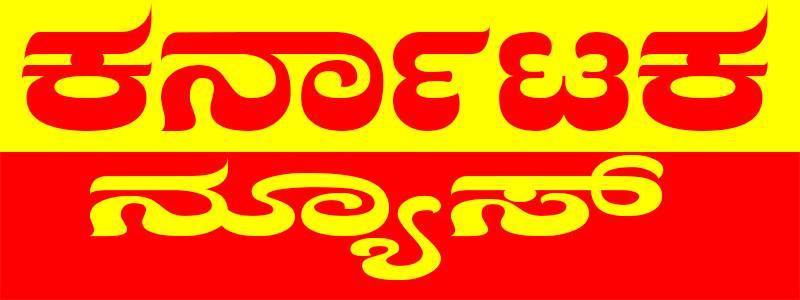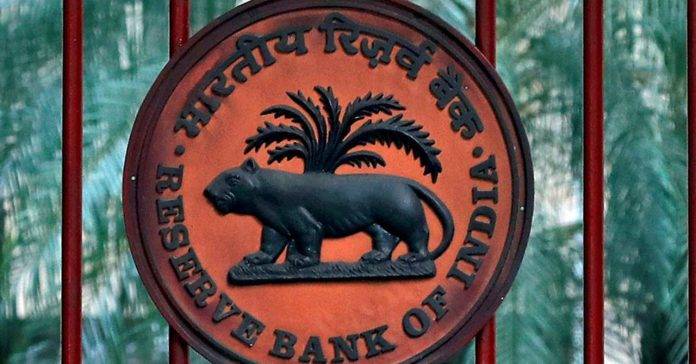Back in 2016 when UPI was started there was very little adoption for this technology. Close to zero transactions were done in the first three months. But over the next three years the technology found a massive adoption and right now sitting in 2022 approximately 500 crore of transaction is done every single month on UPI. UPI became such a massive story to come out of India that many countries. For example UK, France, Nepal, Malaysia, they all have started to adopt UPI. So, my question to you is that why do you think that UPI succeeded and became such a big game changer.
Google pay the answer there is very simple because it offered massive benefits to the end user. For example, you and I did not need to have to carry cash. We could simply transact via UPI just by using our phone. It was safe, secure, fast, easy to understand, easy to execute. So, all these benefits led to the mass adoption of UPI. So, as a December 1st, 2022 the government of India has decided to launch its own CBDC central bank digital currency it is also called as digital rupee so now the question comes that can digital rupee become the next UPI and one of the most talked about growth story how exactly is it going to help customers what is the technology behind it and why such a thing is needed in the first place so I will help you understand the entire complicated concept it is going to be a slightly more advance complicated video but if you understand this video you would understand a lot about block chain decentralized centralized leisures and how CBDC fits into this entire monetary space.
So let us kick start our discussion and I will speak in simple bullet points. So let’s first and foremost understand where CBDC fits in the monetary ecosystem. If we have to divide money we can predominantly divide it into two parts. First would be physical and second would be digital. Now if you are paying legal taxes and if you are holding let’s say 00 rupees of currency note there is nothing wrong with it.
Will be termed as white money. But on the flip side if you are converting your digital money into physical money and holding it somewhere or the other that could be termed as black cash. Now on the flip side there is something called as digital money. A primary case in point would be the bank account money for example if you are having five lakh rupees of cash in your HDFC or ICICI account.
What type of money it would be? It would be digital money that is kept into your bank account. On top of that CBDC could be considered as a digital money. On top that there are different representations of money which could be considered digital in nature. For example, if you have Amazon wallet or Patient wallet and if you are putting some money in it, that could be also considered as digital money.
Now, many a times people think that UPI is also money. No, UPI is not money. It is an enabler of payment. So, that is what UPI does and what type of payments does it enables? It enable digital payments. Now, an important point to understand here is that almost 92% of the money that exist in the economy is digital in format and only 8% of the money is actually hard cash so this is a very important point and let me come back to it but let me quickly explain what do I mean by money sitting in a digital format and what does it look like so most of the money that you see in India for example there is like 100 trillion rupees that is flowing through Indian economy out of that $100 trillion $92 trillion dollar would be purely in a digital format and only 8% will be in hard cash format now who controls those numbers.
So, this is what the system looks like. So, the payment and settlement system in India is controlled by RBI. Now, what do I mean? Basically, what is it that they are controlling? They are controlling something called as ledger. For example, this is the master ledger that has accounting of all the digital transactions that are being done. Now, all the other commercial banks have their own set of ledgers.
For example, HDFC will have its own ledger, ICICI access bank. All these different different banks will have their own ledger which is in turn connected to master ledger which allows RBI to monitor exactly how much money is flowing through the economy. Now the back end mechanics is highly complicated but I hope you got the concept of ledger that there is a master ledger and there are a set of other mini ledgers that are controlled by other banks.
And when you combine all these ledgers it gives RBI a sense how much money is flowing through the economy in a digital format. Important point to be noted that if you decide to withdraw 5000 rupees and keep it under your mattress you can do anything it and it will become really difficult for the government to keep a track of what you are doing with that money and that is the precise problem that Modi ji tried to solve but unfortunately it did not work out and now the cash economy is back with the bank so this brings us to the next major point of the video that what exactly is CBDC so this is how CBDC has been defined so CBDC is not a new currency but an electronic version of sovereign currency that is rupee now you will get a little bit confused that okay this is exactly like like digital only it is equivalent to the money that I am keeping in my bank so how is this particular currency different from whatever else money I am having in my account ,
okay so please hold on I will help you understand that now it is further said that this bookkeeping the ledger thing that I talked about it can be maintained in a conventional centrally controlled database what is centrally controlled database those mini databases or the mega database that RBI maintains or through distributed ledger technology so this is the bookkeeping process that this ledger is now in order to understand CBDC better you have to pay attention for the next two 3 minute because I am going to explain you three critical definition that forms the basis of CBDC the first key term that you need to understand is called as block chain now block chain in very easy to understand words is a network that allows you to push data or transfer data from point A to point B now if you see this in the money context for example if you are giving your bank a command that transfer 00 rupees from my account to let’s say Rajiv who has a bank account with ICICI Bank.
What would happen to my account? So HDFC bank will make a ledger entry that debit Akshay’s 00 rupees and ICICI bank will make an entry that credit 100 rupees for Rajiv. So this is what the accounting entry would look like and what are we precisely doing? We are simply pushing this data and this data through a network called as RTGS, NEFT, IMPS et cetera et cetera.
So a more refined definition of blockchain would be that it is actually a technology that can enable you to develop networks that allow you to push data from point A to point B now monetary systems can also be developed for example CBDC it is being said that it is being developed on block chain similarly Bitcoin Ethereum are also developed on blockchain and you might have heard that these are blockchain technologies now before I explain the next two points just a very quick request that if you are enjoying the video do consider subscribing to this channel it would help these type of videos reach out to more people and please please please like these type of videos I am making hyper complicated concepts very easy and it requires a lot of research.
So your little bit of help will go a long way. Okay, so the second key thing that you need to understand is the concept of centralized ledgers and distributed ledgers. Now again going back to that RBI example that I gave earlier. So RBI maintains a master ledger. This is what the master ledger is. Similarly HDFC maintains its own ledger. ICICI will maintain its own ledger and access will maintain its own ledger.
All these ledgers are then somewhat with RBI that does the tallying and maintains this master ledger right so this is how the entire mechanics operates in a centralized system there is a very clear accountability as to who maintains the ledger for example this master ledger is maintained by RBI this ledger is maintained by HDFC this ledger is maintained by access so on and so forth so in a centralized ledger system there is some party that is accountable for managing that particular ledger but on the flip side a distribute ledger is not maintained and controlled by any single entity it is maintained and controlled by something called as a smart contract which is a self executing code for example on this case if RBI decides to share this master ledger with everyone on the internet then you and I can also go and access this master ledger whatever changes are being made on this master ledger it gets reflected across all our computer notes so that is what a distributed ledger would mean for example Ethereum is a distributed ledger and let me take you to Ethereum’s blockchain and here is a website it is called as ethr scan.
IO and here you can see all the latest transactions that are happening on Ethereum for example this is the wallet address from which some amount of Ethereum.
15 Ethereum has moved similarly you can keep on scanning it and you and I anyone can access this particular blockchain network but no such functionality has been built on RBI and therefore RBI is a centralized ledger already and the CBDC that is going to come will be a centralized ledger. So now comes the natural question that what is the difference between making a payment via UPI versus making a payment via CBDC.
So right now the system is that RBI issues hundred rupees. It could be in a physical format it could be in a digital format. This goes into your account. So you are holding hundred rupees let’s say in HDFC bank. Now you want to buy an ice cream from a merchant. Now that merchant has a bank account with ICICI. So when you pay this hundred rupees to the merchant via Google Pay then which banks are involved here HDFC bank is involved and ICICI bank is involved in terms of enabling that UPI transaction to transfer 100 rupees from you to the merchants account which exist with ICICI bank so this mechanics requires the involvement of commercial banks but on the flip side CBDC does not require such a mechanism here the RBI is directly giving you something called a CBDC and you can go and make a purchase with the merchant so from a functionality point of view there is a zero between this mechanism and this mechanism.
So then comes the natural question then why is it that the government is spending crores and crores of rupee in terms of building this CBDC technology there must be something good with this. Okay, so to help you understand this better and factually let me take you to RBI’s concept note on this particular topic. So this is what the RBI says and I have taken this directly from RBI’s website.
You too can go and read it. So they say that E rupees will provide an additional option to the currency available forms of money. It is substantially not different from bank notes but being digital. It is likely to be easier, faster and cheaper. It also has all the transactional benefits of other forms of digital money. Now to further validate this point, read the entire concept paper and you will witness this line.
The key motivators for exploring the issuance of CBDC in India among other include reduction in operational cost involved in physical cash management. Now I do not want to cast expursions but this is completely correct because as per the previous data that I had shown you almost 92% of money is digital government will not save any cost in form of money printing because that is physical form of money printing on which cost is incurred since CBDC is digital in nature there is hardly any cost benefit that is coming now one counter argument could be that you know what managing all those ledgers that you are earlier speaking about that HDFCI CICI co-tech all will have to manage their own individual ledgers then tally it with the RBI’s main ledger and then all the mechanism of reconciling all these books that might require a lot of cost yes agreed completely but what simply CBDC is doing is that it is taking power away from these commercial banks and vesting more power with RBI which is indirectly controlled by the government now another key point that has been expressed in support of CBDC is that it will improve direct benefit transfer now what is the meaning of direct benefit transfer for example you might have seen that there are lot of people who live below poverty line they require rations so the what it does is that it transfer money directly into their bank account.
Now the government is saying that we will come out with a voucher system called as E rupee, E R U PI. So this is what they will come up with and we will send it directly to the phones of the customers and they can go and avail credit or whatever benefit has been assigned to them. Now this sounds great in theory but here is the counter argument.
This is a statement by Mr. Piyush Goyal himself. That right now direct benefit transfers are doing wonderfully well and there has been almost an 88% adoption Fintech in India. This is an official statement given by a sitting minister. A lot of money has already been spent in form of Jam Trinity. Which is Jandhan Adhar and mobile. A lot of bank accounts have already been opened.
If this system had to be instituted and you have already spent crazy amount of money building the Jandan Adhar mobile thing and all of us have gotten our Adhar card created et cetera et cetera. Then what was the point of building this entire Jam system in the first place which is almost at completion and now we are trying to move to another system.
So to cut the long story short, according to me there is no real benefit of CBDC. Now you might say that Akshay you know what CBDC’s are being introduced by Chinese government. Here is a surveillance system in China and what you would notice is that the Chinese government has installed approximately 20 crore cameras all across China. They can survey every single citizen.
They have justified the use of this surveillance system saying that it enables us to deal with terrorism, theft, all this treachery that is going across the society. But there was a data which categorically pointed out that the Chinese government was using the surveillance system to crush a minority community called as so for them their CBDC allows their government to exert more control so now let me finally talk about the disadvantages of CBDC number one as what the Chinese government can do any other government can do the same it gives central government more control by taking away control from intermediary bank the more the centralization or power vested with fewer politician the more it can harm the general populous.
So, this is problem number one. Problem number two is in the design of CBDC itself that it does not allow you to pay interest. So, if you go and get a CBDC, you are not going to get any interest on it. So, it is better to just keep your digital money in bank and use it via that channel. At least you are making some interest income.
Now, third and final criticism comes from Doctor Rajan. Now, many people comment that you know what Doctor Rajan is this and that is political this and no. No, he was the one who played a pivotal role in the adoption of UPI payments in India also.
So we have to give him credit and listen to his commentary carefully so this is what he says that the problem with central bank digital currency is that it is not well designed is that it hovers up all the data and essentially provides competition to even traditional private sector activities think about it this way that if you are directly taking money from central bank not taking it through HDFC then what are you doing you are hurting the credit lending process in the economy commercial banks play a very important role that they check the typo people they are giving loans to.
There has been massive problem in terms of giving public debt. You can tell me the bank’s name. Who has Neeram Modi taken a loan from? Again, you can let me know the names. The point I am trying to prove is that the public sector banks are controlled by whom they are controlled by the government. They do not make efficient lending decisions. Visa with private sector banks. So, if you are taking more credit lending power away from private banks, it can cause a disruption in the economy.
In China’s case, it is a very different system. Why they want to control the economy? It’s a centralized economy that works great for them but if we convert Indian economy into a centralized system it can create a lot more negative impact so in summary CBDC does not have any real advantage even the government is struggling in terms of communicating what the key advantage is if you understand I am very happy to hear the other side of the argument please drop it the comment and let me know what exactly do you see the benefits of CBDC but as of now there are none there are more risks compare to advantages in terms of introduction of CBDC thank you so much for watching and I’ll see you soon



















